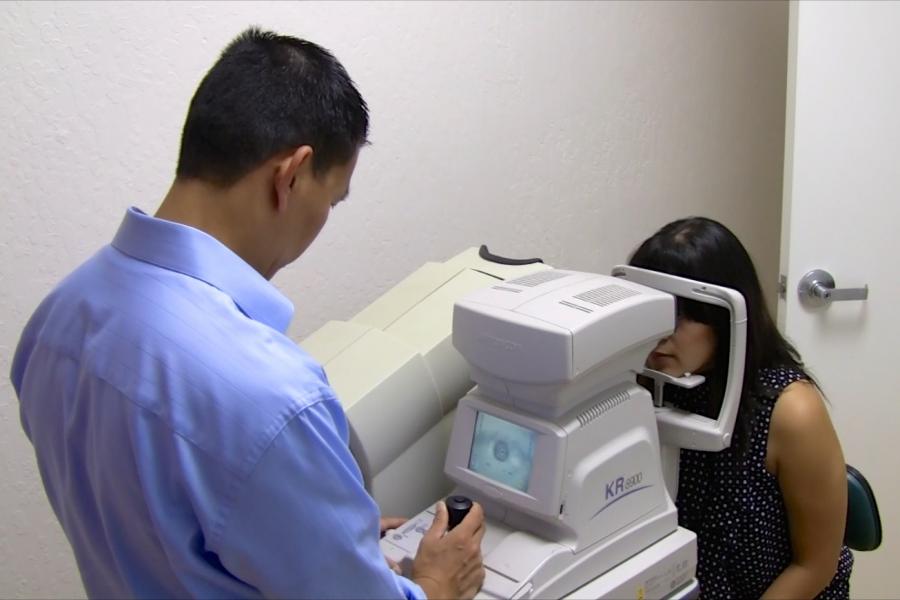Many of us experience eye floaters—they’re those tiny moving specks that occasionally appear in your field of vision. Manifested in a variety of shapes (from dots to squiggly lines to tiny rings), these particles can be a minor nuisance, particularly for those who work on computers or in the sunlight. However, there are rare instances in which this seemingly benign phenomenon can indicate a more serious condition.

While eye floaters are typically benign, in rare cases they can pose a greater concern. Photo: Optimus Vision Care (2014)
Eye floaters are actually small flecks of a protein called collagen that break off and become suspended in the vitreous humor (the gel-like substance that fills the back of the eye). These flecks are made visible within your field of vision in two ways: as shadows cast upon the retina or by refracting light that passes through them. Eye floaters are typically caused by degenerative changes in the vitreous humor, and they’re a common side effect of aging, which is why they’re often experienced by people over the age of 50.
If the presence of eye floaters seems to increase in prominence over time or develops following surgery or trauma, there may be cause for concern. However, there’s one instance when you should seek immediate medical attention: If you notice a sudden increase in the amount of eye floaters accompanied by flashes of light or loss of peripheral vision. These may be symptoms of retinal tear or detachment, which can lead to permanent vision loss if not immediately treated.
In any case, the best way to monitor eye floaters, along with the general condition of your optical health, is to maintain regularly scheduled eye examinations. That way, your optometrist will be able to provide you with preventative solutions rather than emergency expedients.
To find a Diamond Certified eye care professional in your area, click on one of the links below.
Alameda County: www.diamondcertified.info/alameda-ophthalmologist, www.diamondcertified.info/alameda-opticians, www.diamondcertified.info/alameda-optometrist
Contra Costa County: www.diamondcertified.info/contra-costa-ophthalmologist, www.diamondcertified.info/contra-costa-optometrist
Marin County: www.diamondcertified.info/marin-optometrist
Napa County: www.diamondcertified.info/napa-opticians
San Francisco: www.diamondcertified.info/san-francisco-opticians
San Mateo County: www.diamondcertified.info/san-mateo-opticians, www.diamondcertified.info/san-mateo-optometrist
Santa Clara County: www.diamondcertified.info/santa-clara-ophthalmologist, www.diamondcertified.info/santa-clara-optometrist
Sonoma County: www.diamondcertified.info/sonoma-opticians, www.diamondcertified.info/sonoma-optometrist
One Response
Leave a Reply
You must be logged in to post a comment.

Great explanation of what you can expect when dealing with eye floaters. It’s comforting to know that it’s not always a dire situation. Thanks so much for sharing.